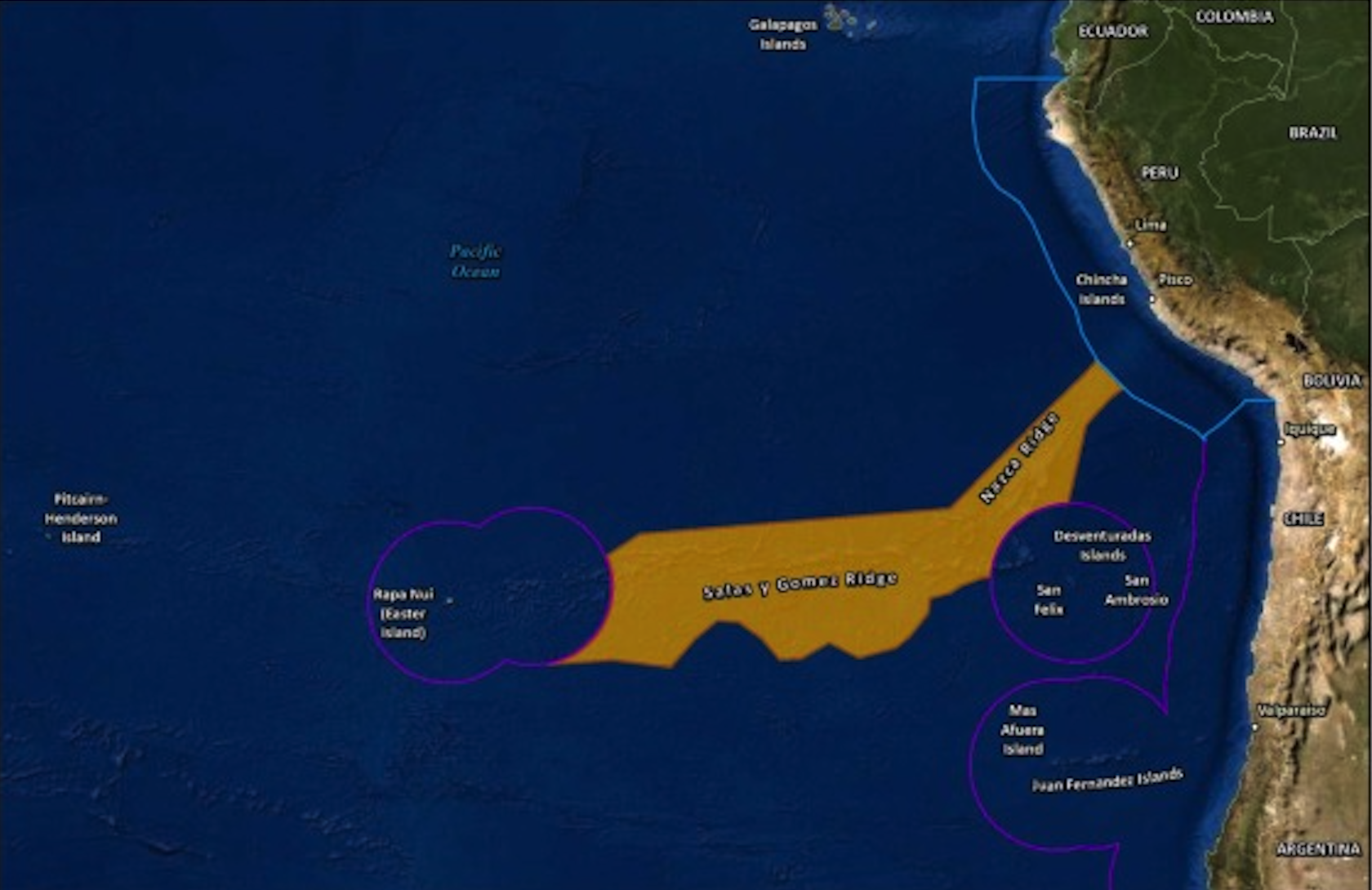Salas y Gómez

- 20 Apr 2024
Why is it in the News?
An international team of scientists last week announced they discovered 160 species when exploring 10 seamounts and two islands on the 2,900-kilometre-long ocean ridge Salas y Gómez.
What is ‘Salas y Gomez’?
- Salas y Gómez is a remarkable underwater mountain chain in the Southeastern Pacific Ocean.
- This 2,900-kilometer-long range stretches in a west-east orientation, connecting the East Pacific Rise and the Nazca Ridge.
- The western end of the chain lies within Chile's Exclusive Economic Zone near the Easter Islands, while the eastern part extends into areas beyond national jurisdiction and touches upon the national waters of Chile and Peru.
- The region is characterized by unique ecosystems isolated by the Atacama Trench, the Humboldt Current System, and an extreme oxygen minimum zone.
- Salas y Gómez and Nazca ridges are known for their extraordinary biodiversity, hosting some of the highest levels of marine endemism on Earth.
- Given the ecological significance of this underwater mountain range, there is a growing interest in designating Salas y Gómez and its surrounding areas as high-seas marine protected areas upon the ratification of the UN High Seas Treaty.
- This initiative aims to safeguard the region's unique ecosystems and contribute to global marine conservation efforts.
About the United Nations High Seas Treaty:
- The United Nations High Seas Treaty is a legal framework, or a set of legal tools, designed to protect the oceans that are beyond any country’s territory.
- The high seas are defined as the waters that are 200 nautical miles from any national jurisdiction; they are international open waters that all countries can use for marine business such as shipping, fishing, and marine research.
- The treaty’s formal name is the Biodiversity Beyond National Jurisdiction Treaty, or BBNJ Treaty for short.
Key Facts About the High Seas Treaty:
- The treaty was to be negotiated under the United Nations Convention on Laws of the Sea (UNCLOS) of 1982.
- It took 19 years to reach an agreement on it.
- Before now, laws to protect ocean waters and biodiversity beyond countries’ territorial boundaries only protected 1.2% of the high seas.
